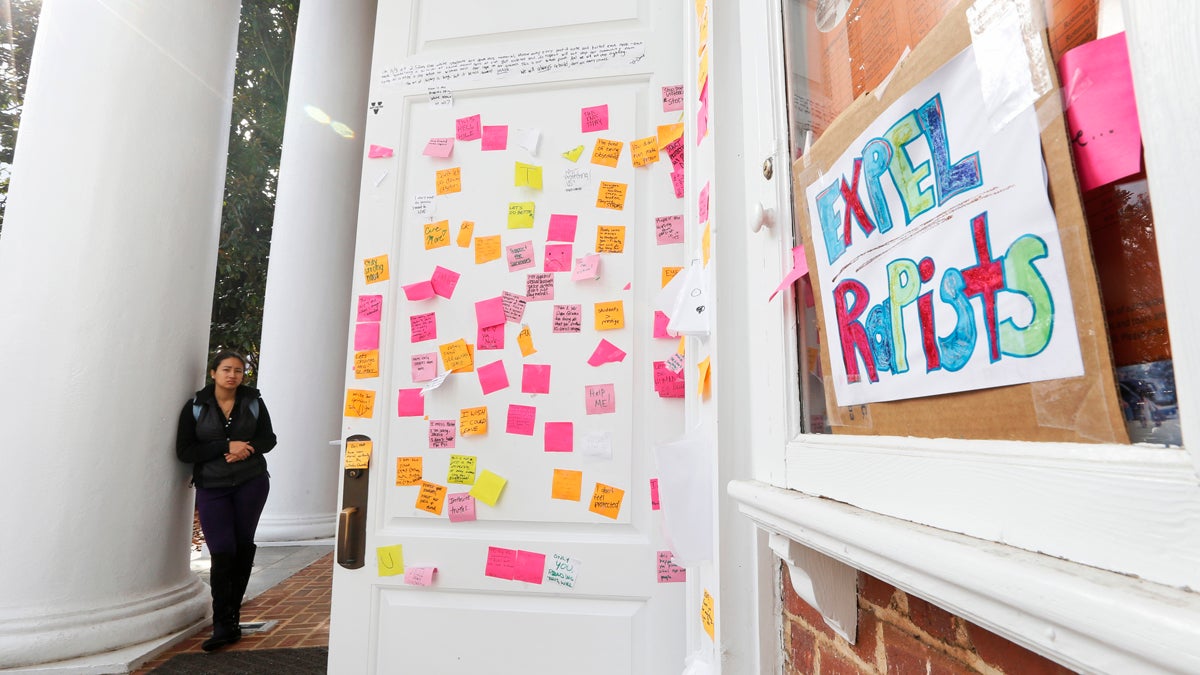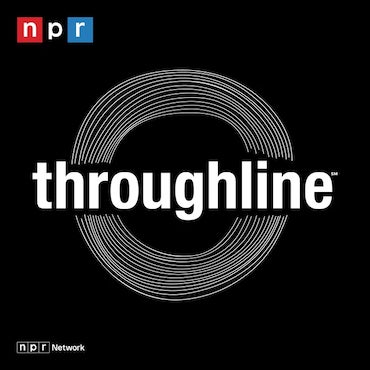Rape story update: Beware of anonymous sources

A University of Virginia student looks over postings on the door of Peabody Hall related to the Phi Kappa Psi gang rape allegations at the school in Charlottesville, Va., Monday, Nov. 24, 2014. The university has suspended activities at all campus fraternal organizations amid an investigation into a published report in which a student described being sexually assaulted by seven men in 2012 at the Phi Kappa Psi house. (Steve Helber/AP Photo)
I’m ending the week where I began it, with the Rolling Stone story about rape. The magazine’s tale has continued to unravel, prompting me to raise a journalistic issue that I left off the table on Monday: The perils of relying on anonymous sources.
Or, in this particularly egregious case, the perils of hinging an entire story on one anonymous source.
The debate about anonymous sources – and whether they hurt journalists’ credibility – has bedeviled the profession for decades. Right after Watergate, it became cool to salt one’s stories with phrases like “sources say.” Thanks to Deep Throat and the other shadowy players in the Woodward-Bernstein narrative, anonymity was virtually mythologized. Bob Woodward still says today that insiders won’t dish the truth unless their identities are protected; his best-selling books have always relied on the unnamed.
But, in 1980, we also got the Janet Cooke scandal. Lest you forgot, or didn’t know, Cooke was the young Washington Post reporter whose epic story on child heroin addiction featured the travails of one anonymous source, an eight-year-old inner city kid named “Jimmy.” Turned out, however, that Jimmy didn’t exist. It wasn’t until after the story won a Pulitzer Prize that Cooke confessed to having concocted “Jimmy” out of thin air. Woodward was one of her editors.
“Jackie,” the star of the Rolling Stone opus, is at least a real person. Problem is, her account of what happened to her at the University of Virginia, gets more fantastical by the day. In the latest deconstruction of Rolling Stone – as reported by The Washington Post, which has long since recovered from the Cooke scandal – Jackie’s original account has been shredded, due to its “mounting inconsistencies.”
She told Rolling Stone that she was sexually assaulted at a UVa frat after being taken there by a frat member named “Drew,” who worked as a lifeguard at a campus facility. But three of her friends – the same friends who aided her after the alleged gang rape; none of whom were interviewed by Rolling Stone – told The Post that she’d spun them a different yarn. She told them that her date was not a guy named Drew. She provided the full name of someone else – but, as it turns out, this person doesn’t even go to UVa.
It gets worse. From the Post story: “Also, photographs that were texted to one of the friends showing her date that night were actually pictures depicting one of Jackie’s high school classmates in Northern Virginia. That man, now a junior at a university in another state, confirmed that the photographs were of him and said he barely knew Jackie and hasn’t been to Charlottesville for at least six years.” All told, the three friends “expressed suspicions about Jackie’s allegations.”
This is what can happen when you hang an entire project on one person who won’t go on the record – and whose account is not even weighed against the recollections of others. Bob Woodward likes to say that anonymity frees people up to be candid, but, as increasingly evidenced by Rolling Stone’s misfire, anonymity can also free people up to concoct without acccountability.
And in this era – with rape being discussed more openly than ever before – there’s no need to base an entire story on someone who refuses to be named.
Rolling Stone, in its explanation to readers, said: “In trying to be sensitive to the unfair shame and humiliation many women feel after a sexual assault, we made a judgment – the kind of judgment reporters and editors make every day.” But in this era, it’s not so difficult to find rape victims (in the latest parlance, rape “survivors”) who are willing to go on the record. They don’t feel they have anything to be ashamed of, any more than a guy who has been mugged at gunpoint, or anyone else victimized by a violent crime.
The shame stigma dates back to a long-distant time when society condemned “fallen women,” but, fortunately, many of today’s survivors refuse to view themselves as fallen. Reporters, for the sake of their own credibility, should gravitate to those who are willing to be named. Heck, the Des Moines Register newspaper did a series on rape that featured a named victim, Nancy Ziegenmeyer – and the series won the Pulitzer Prize for public service. The Pulitzer committee lauded the series for prompting “widespread reconsideration of the traditional media practice of concealing the identity of rape victims.”
Care to guess what year that was? 1990.
A quarter century later, we’re still dragging our feet on this issue; hopefully, the Rolling Stone debacle will quicken our step. As media ombudsman and ethics watchdog Alicia C. Shepard warned back in 1994, “Each time an unnamed source turns out to be wrong…journalism’s credibility suffers.”
Follow me on Twitter, @dickpolman1, and on Facebook.
WHYY is your source for fact-based, in-depth journalism and information. As a nonprofit organization, we rely on financial support from readers like you. Please give today.

